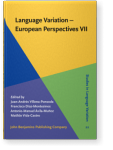Chapter 10
Slit-t in Dublin English
The paper presents an analysis of speakers in
Dublin, Ireland who align themselves with an authoritative
interactional identity by realising a slit-t variant. A
statistical analysis is first presented and then salient
patterns of variation are discussed before proceeding to a
qualitative evaluation. The latter highlights the
discourse functions clustering around the slit-t
occurrences, which indicate that a speaker will adopt a
sociopragmatic position, like emphasizing a point. My
interpretations characterize the interactions where slit-t
tokens are found as epistemically-based, inferring how
speakers position themselves and others. The conclusions
include a discussion of how ethnographically informed,
qualitatively-skewed mixed methods can elucidate the
social meaning of linguistic variants.
Article outline
- 1.Introduction: Slit-t in Dublin English
- 2.Club Fingal and wider context
- 3.Analysis of word-final /t/
- 3.1Salient patterns of variation in word-final
/t/
- 4.The discourse functions of the word-final slit-t
variant
- 4.1Slit-t indicates speaker will adopt a
sociopragmatic position
- 4.2Slit-t introduces a point of sociopragmatic
weight
- 4.3Slit-t does sociopragmatic work, with a
pause
- 4.4Slit-t to emphasise a point
- 5.Conclusion: Slit-t in Dublin English
-
References
-
Appendix
